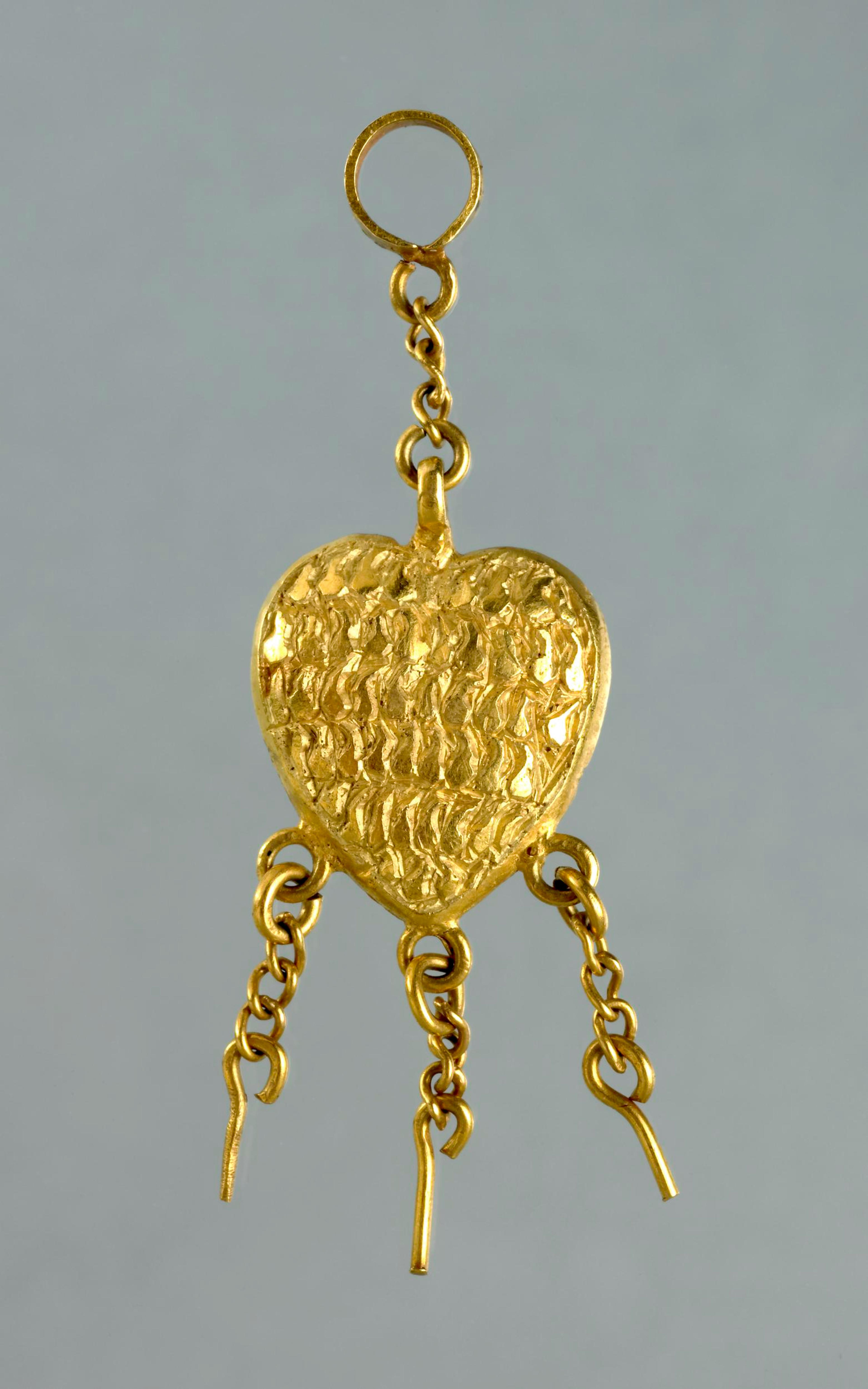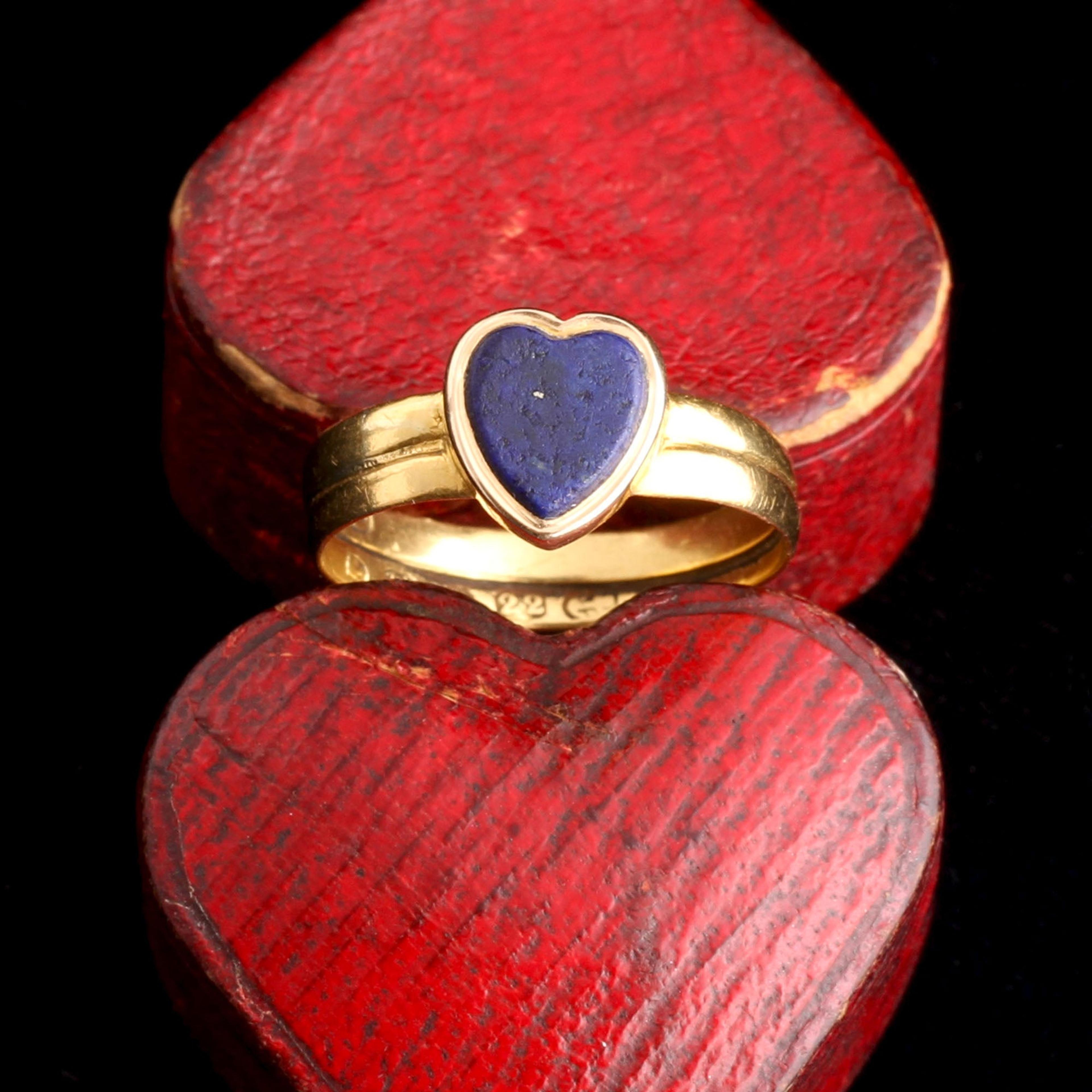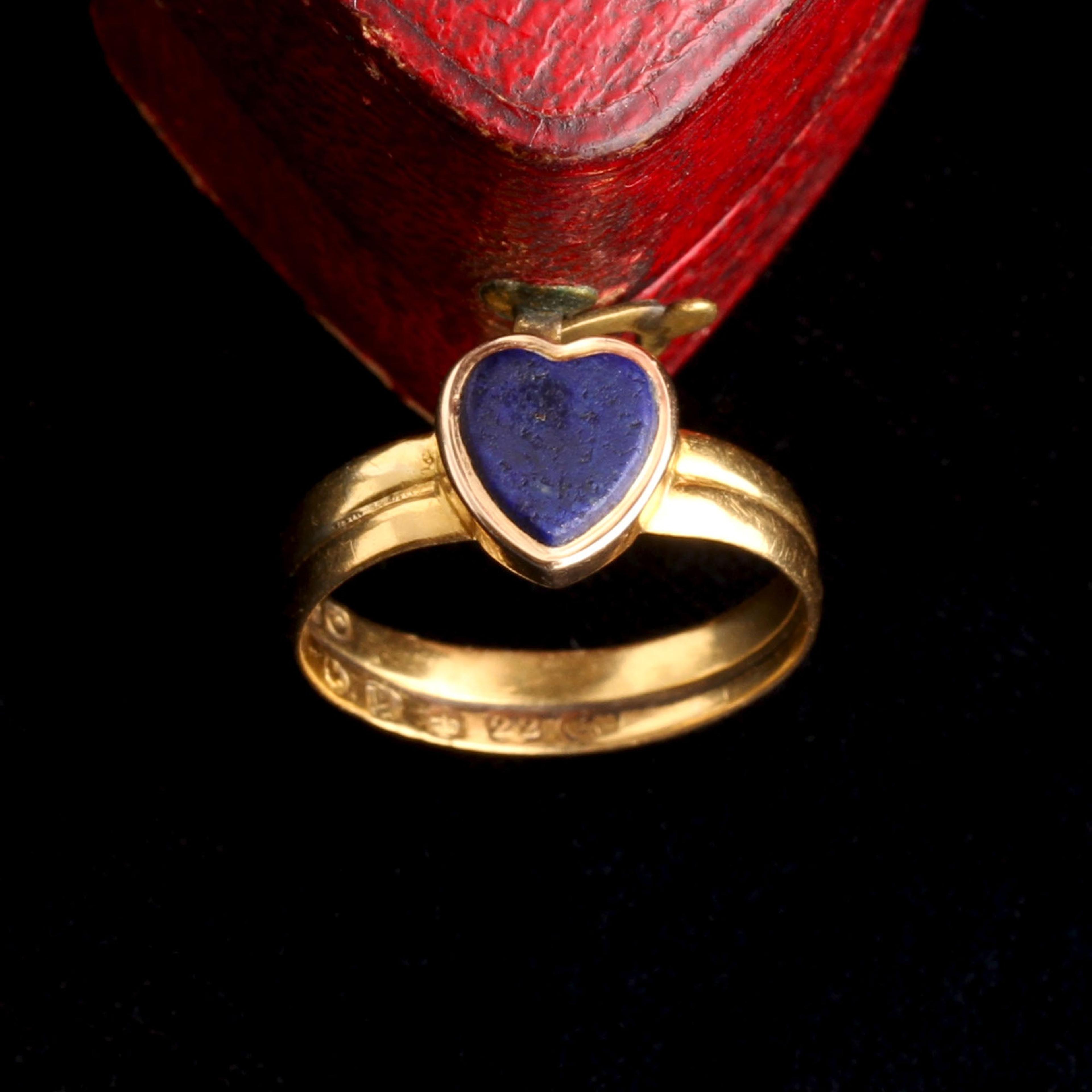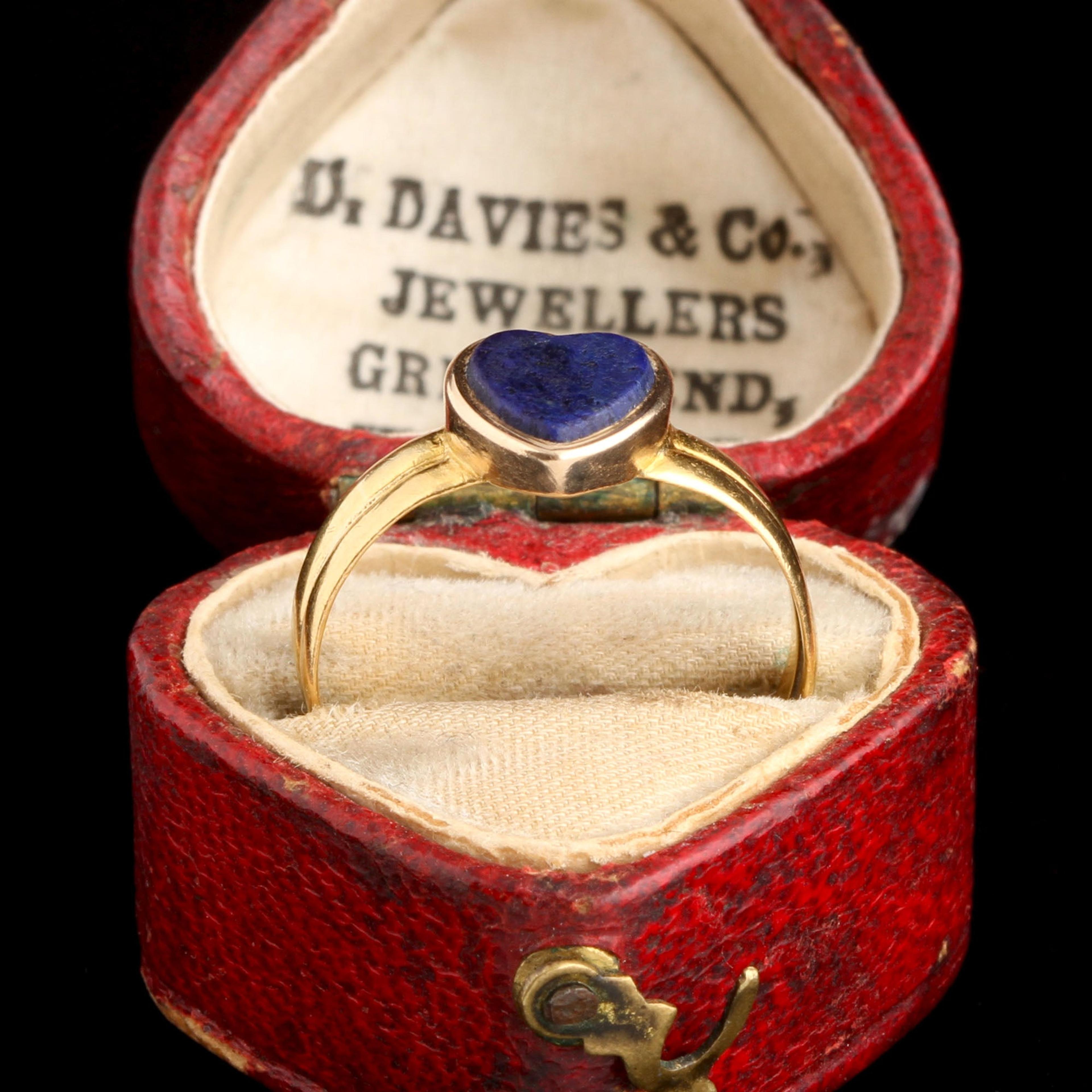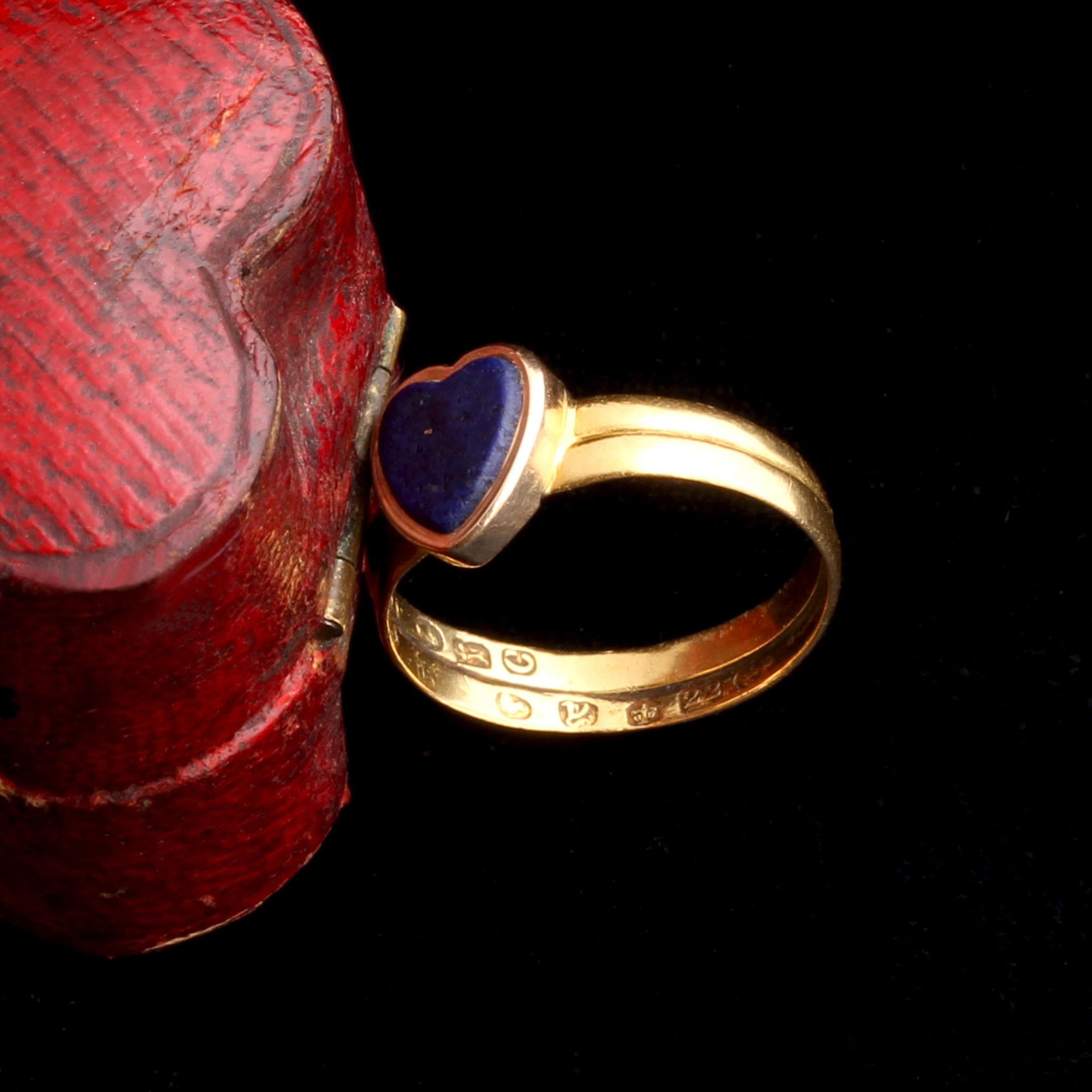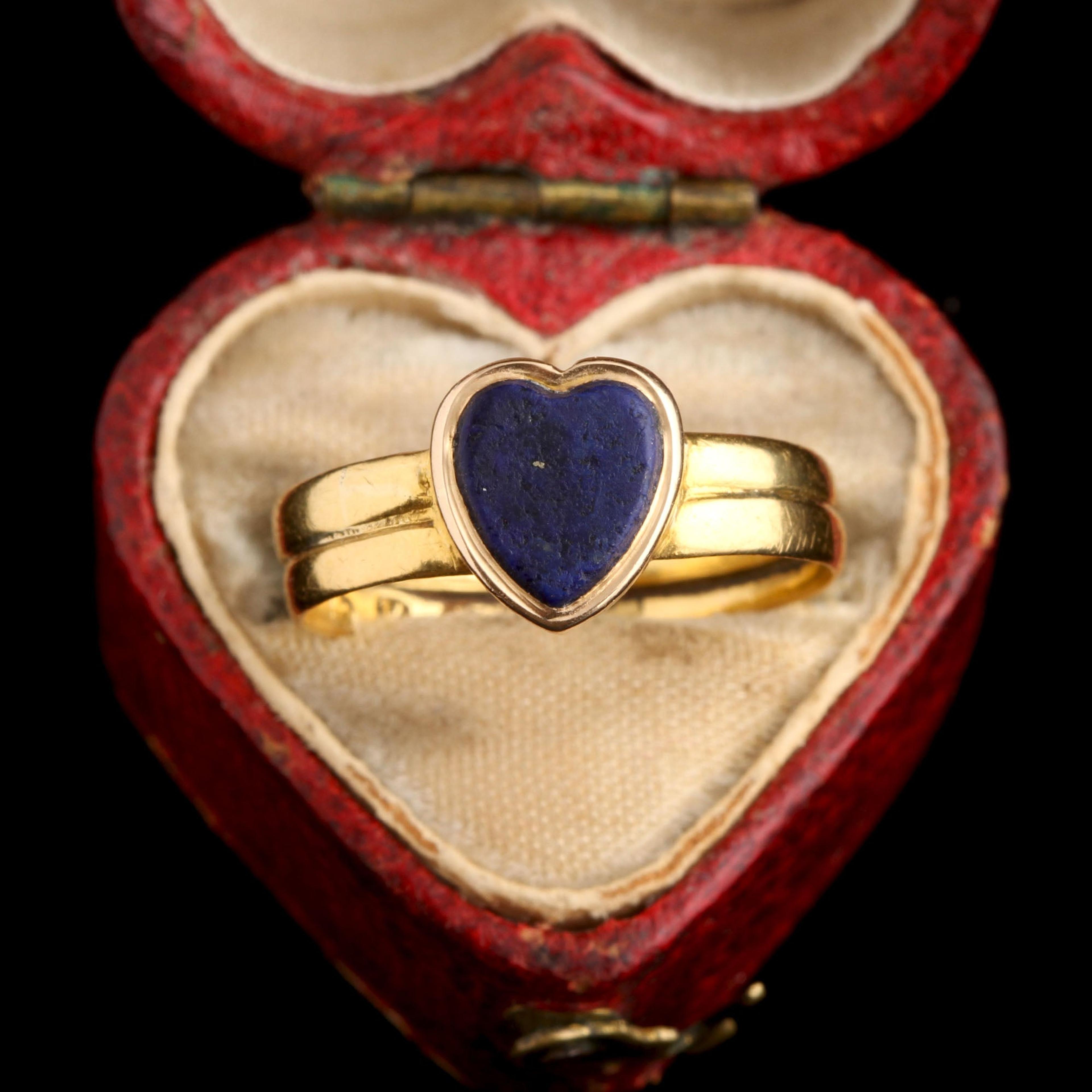A hybrid ring with stories to tell. Composed of three components of different eras, this sentimental piece features a heart shaped lapis (likely cut from a tiny Georgian fob) and two 22k gold wedding bands. One band has Georgian hallmarks but is missing the city symbol making the date harder to ascertain, however, it has the duty mark of King George IV which means it dates somewhere in the range of 1821-1834. The other band is Victorian Birmingham hallmarks for 1847.
thedetails
- Materials
22k yellow gold bands (both marked), 14k rose gold bezel (tests), lapis
- Age
c. 1860 (the three elements comprising the ring date to different periods - The band with Georgian hallmarks is missing city symbol but has the duty mark bust of George IV (1821-1834); the Victorian band is stamped with Birmingham hallmarks for 1847 with bust of young Victoria duty mark; the lapis heart looks like it was cut from a tiny Georgian fob c. 1820)
- Condition
Very good - assembled from three separate elements (bands and heart) in the mid Victorian period
- Size
6.5, can be resized; 8.8mm head, 3.9mm shank
Need more photos?
Send us an email to request photos of this piece on a model.
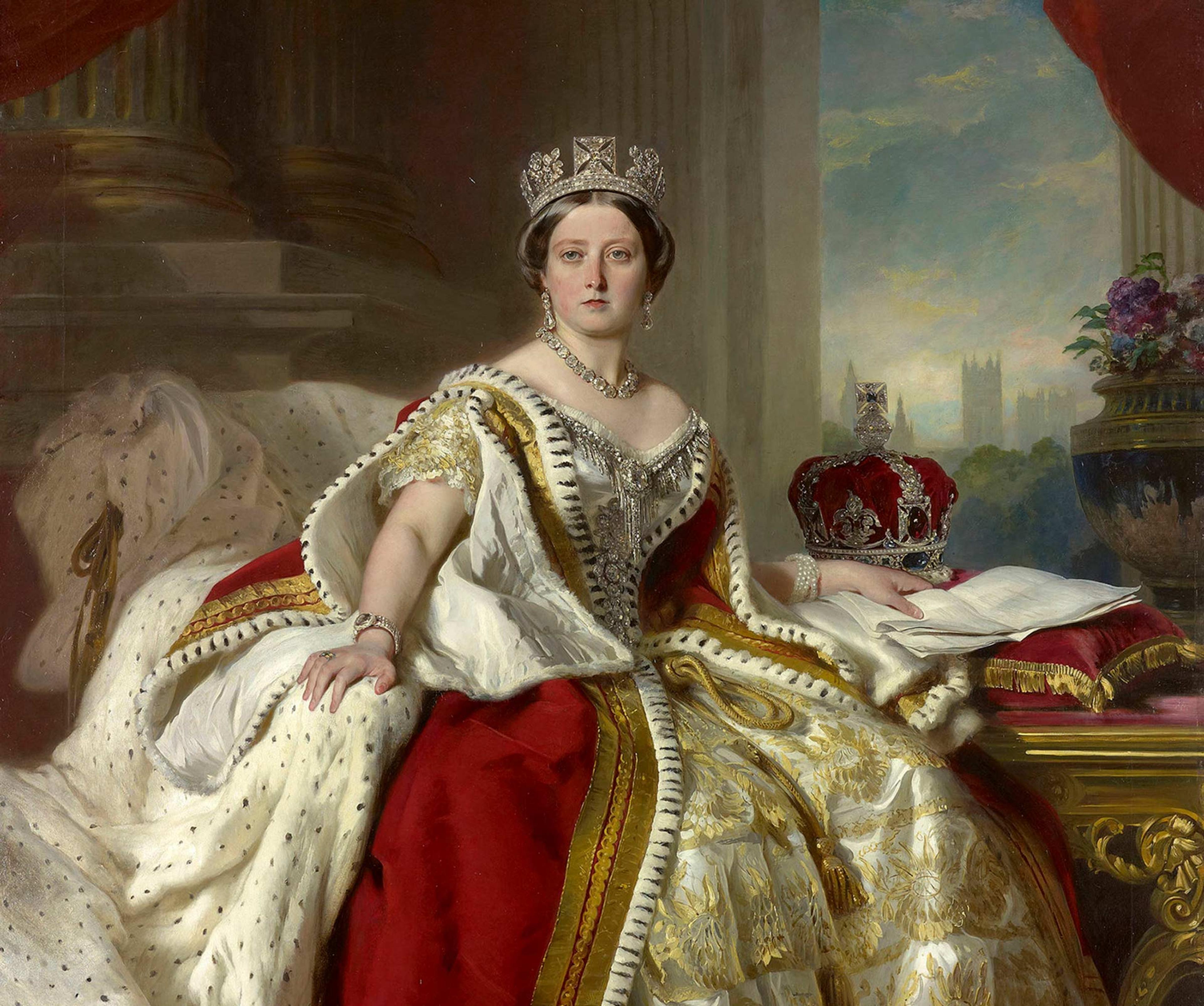
Aboutthe
VictorianEra
1837 — 1901
The Victorians were avid consumers and novelty-seekers, especially when it came to fashion, and numerous fads came and went throughout the 19th century. In jewelry, whatever fashion choices Queen V. made reverberated throughout the kingdom. The Romantic period reflected the queen’s legendary love for her husband, Albert.
Jewelry from this period featured joyful designs like flowers, hearts, and birds, all which often had symbolic meaning. The queen’s betrothal ring was made in the shape of a snake, which stood for love, fidelity, and eternity. The exuberant tone shifted after Prince Albert passed away in 1861, marking the beginning of the Grand Period. Black jewelry became de rigeur as the Queen and her subjects entered “mourning,” which at the time represented not just an emotional state, as we conceive of it today, but a specific manner of conduct and dress. She wore the color black for the remainder of her life, and we see lots of black onyx, enamel, jet, and gutta percha in the jewelry from this time. Finally, during the late Victorian period, which transitioned along with a rapidly changing world into the “Aesthetic Movement”, there was a return to organic and whimsical motifs: serpents, crescent moons, animals, and Japonaisserie designed for the more liberated “Gibson Girl”. During the second half of the 19th century, America entered the global jewelry market, with Tiffany and Co. leading the way. Lapidaries continued to perfect their techniques, and the old European cut emerged toward the end of the Victorian period. The discovery of rich diamond mines in South Africa made the colorless stones more accessible than ever before.
please note:Terms of Sale
Antiques can be returned unworn and in original condition within 10 days of delivery for an exchange or refund minus the cost of shipping. Once a piece has been altered, including ring re-sizing, it is FINAL SALE.
